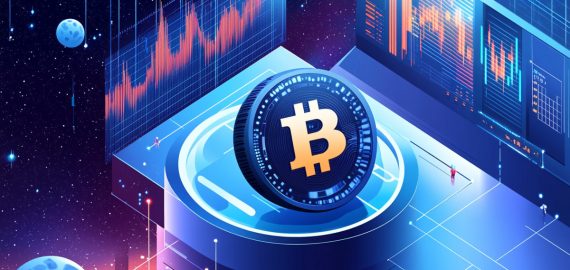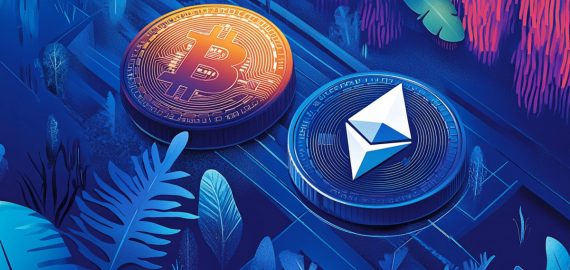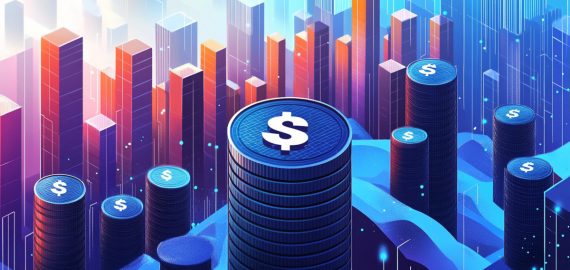What is XRP, and what does it have to do with Ripple?

In Brief
Utilizing the cryptocurrency’s blockchain functionality, allows users to send money across borders without having to rely on expensive third-party services like banks and money transfer services.
XRP is a digital asset created by Ripple to provide fast and low-cost payments across borders.
The XRP cryptocurrency token was created by Ripple to move transactions away from central databases controlled by financial institutions onto a more open infrastructure.
Not only would XRP reduce costs, but it would also cut down on transaction times. Ripple (the company behind XRP) believes that this new system would make transfers of money faster and more secure.
Ripple has built a technology stack for payments using XRP called the RippleNet. Utilizing the cryptocurrency’s blockchain functionality allows users to send money across borders without having to rely on expensive third-party services like banks and money transfer services. What’s more, the transactions are recorded on a distributed ledger managed by Ripple, making them transparent and secure.
XRP is an open-source digital asset that has been designed to facilitate cross-border payments and reduce costs. It can be used as a medium of exchange between two parties in any currency or commodity, including fiat currency and cryptocurrencies. What’s more, it offers a fast settlement time of just 4 seconds, significantly faster than other payment technologies like wire transfers and credit cards.
XRP has become an important part of Ripple’s overall vision to revolutionize the way payments are made worldwide. It provides an efficient and low-cost way to send money overseas and is key in allowing RippleNet to provide a secure, transparent, and fast payment infrastructure. The asset has the potential to change how we move money around the globe, making it easier and more cost-effective for all.
The XRP token was invented by Ripple Labs Inc. in order to facilitate global payments through its RippleNet platform. Although the company owns a large portion of the XRP tokens, it does not control them or their value. The market decides the worth of each token, and anyone can buy, sell, or trade XRP on an open exchange.
Who created XRP?
XRP’s history is complex, as it involves several individuals who were involved in creating both the technology behind it and the business entities that helped it grow.
XRP is frequently credited to OpenCoin co-founders Chris Larsen (who created multiple fintech companies), Arthur Britto (who assisted in developing the XRP Ledger), and Jed McCaleb (who also founded Mt. Gox). Other people also participated.
Understanding Ripple and XRP’s Differences
Ripple is an American technology company that specializes in developing software solutions for payments and currency exchange. It created the RippleNet platform to facilitate secure international transactions using its digital asset XRP.
XRP, on the other hand, is a digital asset that was developed to facilitate payments and money transfers between two parties. It is a currency token, meaning it can be used as a medium of exchange between any two parties in any currency or commodity. What sets XRP apart from other digital assets is its low cost and fast settlement time (4 seconds). It has been adopted by Ripple as the native asset of its RippleNet platform.
After the XRP Ledger was up and running, its developers decided to gift 80 billion tokens to Ripple as it would work with the community to support the cryptocurrency.
To sum up, while Ripple is a technology provider and payment solutions provider that created and operates the RippleNet platform with its native digital asset XRP, it does not own or control XRP. What’s more, anyone can buy, sell, or trade XRP on an open exchange.
How is the XRP Ledger so efficient?
The fact that the typical XRP transaction costs $0.0013927 may surprise even seasoned cryptocurrency users. What allows the XRP Ledger to offer such low transaction fees is its unique design, which eliminates many of the inefficiencies that make other blockchain networks costly and slow.
For instance, instead of using a proof-of-work consensus algorithm as Bitcoin does, XRP utilizes a consensus process called “Ripple Protocol Consensus Algorithm” (RPCA) to reach an agreement on transactions. What this means is that instead of having miners validate transactions, XRP relies on a select group of validators who are chosen by the network and can be trusted to verify every transaction. This reduces the processing time significantly, as there’s no need for energy-consuming mining or waiting for blocks to be verified.
Furthermore, XRP also has a unique feature called “transaction costs” that allows the network to adjust its fees depending on the load on the system. This means that during times of high demand transaction costs can be slightly higher in order to incentivize validators and keep transactions moving quickly.
Understanding XRP’s value
The XRP Ledger software upholds the pre-mined cap of 100 billion XRP, which means no further tokens will ever be produced. In order to finance its technology and development, Ripple escrowed the majority of the leftover tokens after distributing 55 billion to forum participants. This limited XRP supply has the potential to increase its value over time, as some industry experts have argued.
On top of that, the increasing adoption of XRP by institutions. Companies and individuals also play a role in determining its price. What’s more, the partnerships Ripple has established with banks and payment networks, such as MoneyGram, Mercado Pago, and Santander.
In conclusion, XRP is a digital asset created by Ripple to provide fast and low-cost payments across borders. What sets it apart from other cryptocurrencies is its unique design which helps keep transaction costs down. It also has a limited supply, so the coin may appreciate over time. What’s more, its increasing adoption by institutions, companies, and individuals is contributing to its value as well.
Related articles:
- A beginner’s guide to understanding wrapped tokens and wrapped Bitcoin
- On-chain volume vs. trading volume: Differences explained
- A beginner’s guide to the BNB Chain: The evolution of the Binance Smart Chain
Disclaimer
In line with the Trust Project guidelines, please note that the information provided on this page is not intended to be and should not be interpreted as legal, tax, investment, financial, or any other form of advice. It is important to only invest what you can afford to lose and to seek independent financial advice if you have any doubts. For further information, we suggest referring to the terms and conditions as well as the help and support pages provided by the issuer or advertiser. MetaversePost is committed to accurate, unbiased reporting, but market conditions are subject to change without notice.
About The Author
Ken Gitonga is passionate about writing. His work involves writing crypto articles on SEO, TAs, News writing, Web3 articles, crypto price prediction, and white paper drafting. Ken is a content writer and marketer. He has worked in the SEO and content marketing industries for over 3 years and has helped businesses grow their online presence and traffic.
More articles

Ken Gitonga is passionate about writing. His work involves writing crypto articles on SEO, TAs, News writing, Web3 articles, crypto price prediction, and white paper drafting. Ken is a content writer and marketer. He has worked in the SEO and content marketing industries for over 3 years and has helped businesses grow their online presence and traffic.

















































